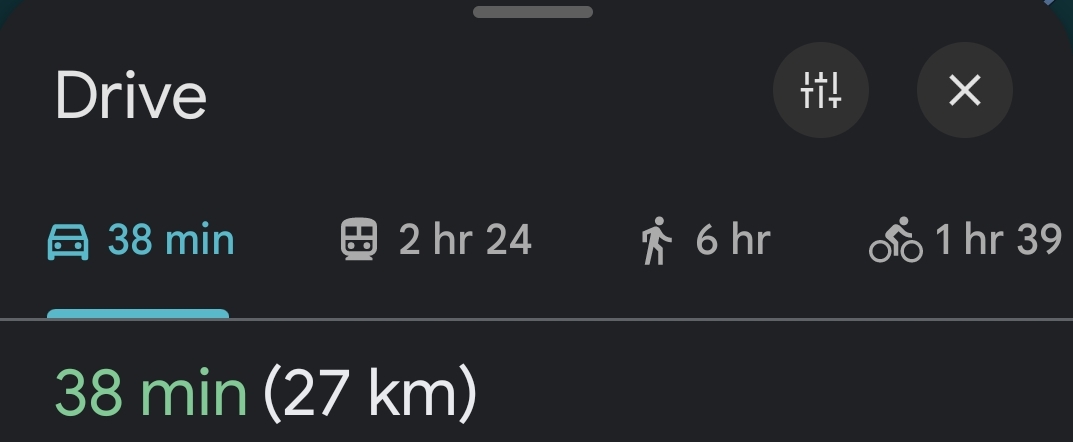
Mine’s a bit closer to your proportions, although I’m not sure if Google can accurately predict the effects climbing a steep hill up and down will have on cycling and walking. The weird thing is the public transport. It must not know about all available lines, because that should be more like 90 minutes.














Thanks for the suggestion, but I already don’t use Google for actual navigation, just for rough estimations. I’m quite happy with OsmDroid.